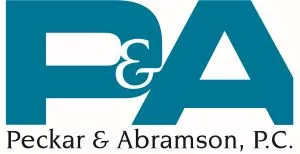There has been much talk in the last several months about OSHA's intent to establish a national standard to prevent heat-related injury and illness. OSHA's Region VI, covering the states of Texas, Louisiana, Arkansas, Oklahoma, and New Mexico1, has had a regional emphasis program dealing with the hazards of heat stress for more than two decades, and much of the talk about a new national standard suggests modeling some aspects of the standard after the Region VI program. Region VI's long-standing program emphasizes water, rest, and shade; acclimatization; and responding to medical emergencies.
In October 2021, OSHA issued its advance notice of proposed rulemaking (ANPRM) for Heat Injury and Prevention. The ANPRM rulemaking established a new Heat Injury and Illness Prevention Work Group within the National Advisory Committee on Occupational Safety and Health (NACOSH.)
Without a specific standard to rely on, OSHA has long sought to enforce an obligation on employers to protect against heat stress by using Regional Emphasis programs and issuing citations under section 5(a)(1) of the OSHAct, known as the "general duty clause." Section 5(a)(1) requires that employers "shall furnish to each of his employees ... a place of employment which are free from recognized hazards that are causing or are likely to cause death or serious physical harm." A 2019 decision of the Occupational Safety and Health Review Commission (OSHRC) established a legal test for enforcement of 5(a)(1) violations that makes it particularly difficult for the Secretary of Labor to enforce citations for failure to protect employees against the hazards of heat stress.2
One recent significant case well illustrates OSHA's problem. Secretary of Labor v. A.H. Sturgill Roofing, Inc. involved a general-duty citation against an employer for exposing employees "to the hazard of excessive heat from working on a commercial roof in the direct sun," which the agency alleged resulted in the death of a 60-year-old man who suffered heatstroke.
Dismissing the general-duty citation, OSHRC held that the Secretary failed to prove that a hazard existed. Although the majority of commissioners didn't explicitly state that heat-stress conditions could never give rise to a general-duty citation, they were skeptical about OSHA's historically broad use of the general duty clause. The commission asserted the clause was originally intended to serve only as a "stopgap measure to protect employees until standards could be adopted." Once a hazard is identified, OSHA's obligation is to develop a specific standard for addressing the hazard.
Although the commission acknowledged that "practical considerations" may have led OSHA to rely on the general-duty clause rather than specific standards, it found that OSHA had increasingly used it over time as a "gotcha" and "catchall" against employers.
OSHRC also noted that California's Division of Occupational Safety and Health ("Cal/OSHA") had previously implemented a specific heat-illness-prevention regulation. In the view of the commission, this demonstrates that such standards are capable of promulgation and provide the public with an opportunity to comment, and once implemented, an opportunity to have a clear understanding of the employer conduct mandated in the interest of safety.
Moving OSHA's goal of establishing a heat stress standard forward, the new Heat Injury and Illness Prevention Work Group held its first meeting in late February 2022. The Work Group comprises representatives from industry groups, unions, and state-sponsored OSHA programs. While it is much too early to predict what results to expect, the conversations from the meeting provide considerable clues as to OSHA's goals for the group.
OSHA assigned the Work Group two principal tasks. The first task is to evaluate OSHA's current heat illness prevention materials and present feedback and recommendations for improving those materials, including whether the materials sufficiently incorporate best practices. Specifically, OSHA seeks advice for developing communication strategies or products that could be useful in heat illness prevention. OSHA also asked the Work Group to look for gaps that might exist in the written materials, whether particular industries would benefit from more tailored guidance materials, and for ideas on how to reach high-risk populations.
Secondarily, OSHA requested that the Work Group critically evaluate stakeholder input received during the comment period of the recently advanced notice of proposed rulemaking. In reviewing the comments received, the group will consider what industries, occupations, job tasks, and geographic regions raise the greatest concern; current best practices, including practices for acclimatization; and challenges for employers identifying and responding to heat illness emergencies.
Once the workgroup deliberates regarding the assigned matters, it will update the full NACOSH on its progress. Ultimately the group will present NACOSH with a written report for consideration. The full NACOSH committee will then deliberate and make a final determination for what, if any, recommendations should be made to OSHA for the drafting of the heat stress standard.
The Work Group report will include:
- recommendations on recognizing risk factors in the workplace;
- identification of at-risk industries, occupations, job tasks, and geographic regions;
- strategies to reduce occupational heat injury and illness, including prevention plans, acclimatization, and monitoring;
- emergency response;
- worker training and engagement, and best practices for employers; and
- incorporation of existing state and industry standards.
In advising the Work Group, OSHA pointed to the 2010 California OSHA plan which primarily focuses on construction and agriculture as a model. OSHA believes the Cal/OSHA campaign was highly effective and can serve as a model, even though it may be seen as slightly outdated.
OSHA has suggested that the rollout of new materials would be best done in the early Spring. It remains to be seen whether OSHA can have a proposed standard ready by Autumn 2022, to implement before Summer 2023.
Most recently, on April 12, 2022, OSHA announced its new National Emphasis Program (NEP), which is expected to bridge the gap until a standard can be issued. OSHA will initiate inspections in high-risk industries, construction, and farming among them when the National Weather Service has issued a heat warning or advisory for a local area. On days when the heat index is 80 F or higher, OSHA inspectors and compliance assistance specialists will engage in proactive outreach and technical assistance to help employers keep workers safe from heat stress hazards on the job. Moreover, OSHA compliance officers will look for and address heat hazards during all inspections conducted without regard to whether the particular inspection concerns an employer covered by the NEP.
OSHA's area offices will engage in outreach to employers, labor organizations, and industry organizations involved in safety and health matters. OSHA plans to make consultation services available to assist employers in developing strategic approaches for addressing workplace heat-related illness.
Footnotes
1 New Mexico is a state-plan state for private sector employers, meaning safety and health regulations are enforced by NMOSHA, not the federal agency..
2 OSHRC is the independent agency that reviews OSHA citations, and contested OSHA citations are prosecuted by the Secretary of Labor.
Originally Published by ConsensusDocs newsletter, 12 May 2022
The content of this article is intended to provide a general guide to the subject matter. Specialist advice should be sought about your specific circumstances.

